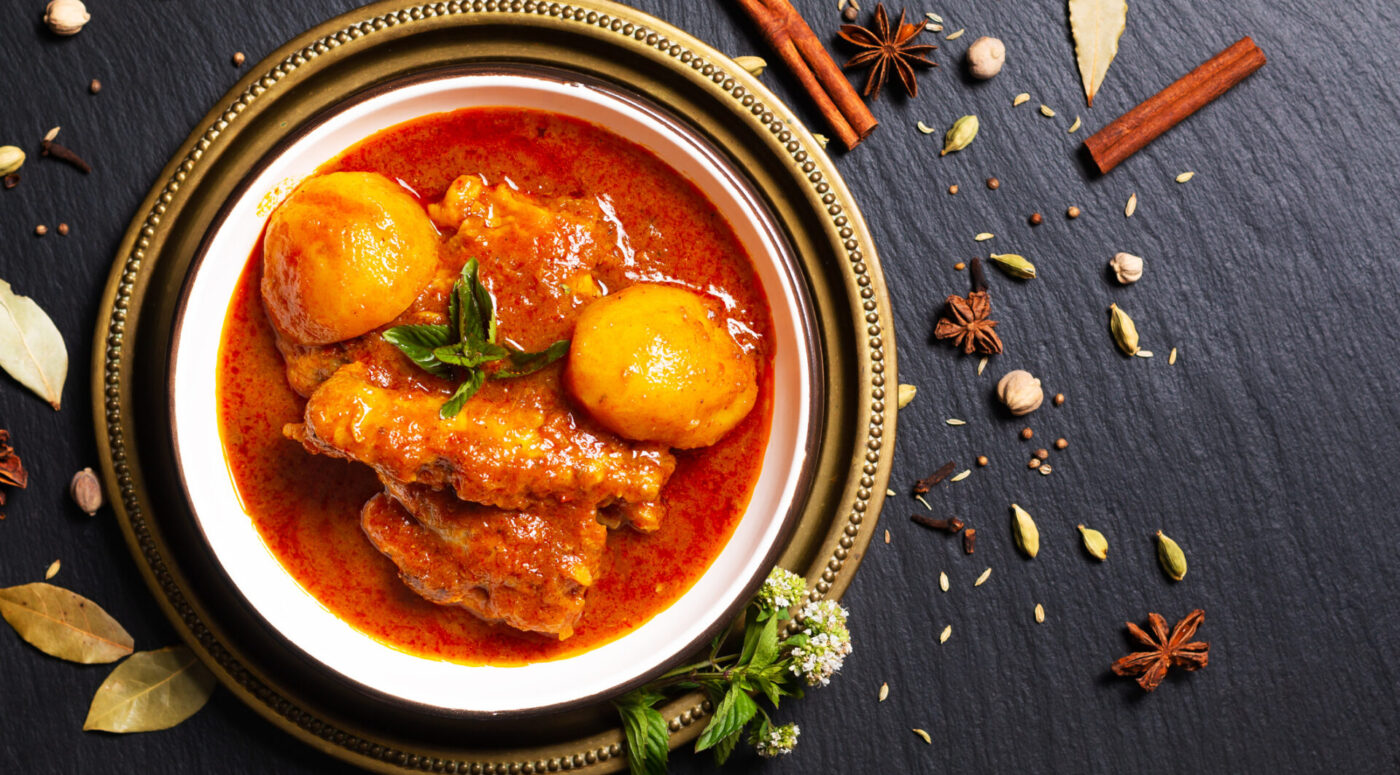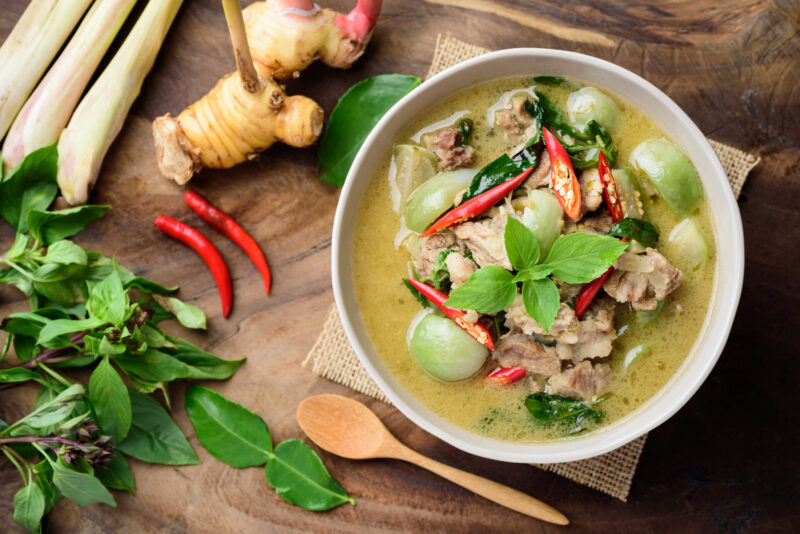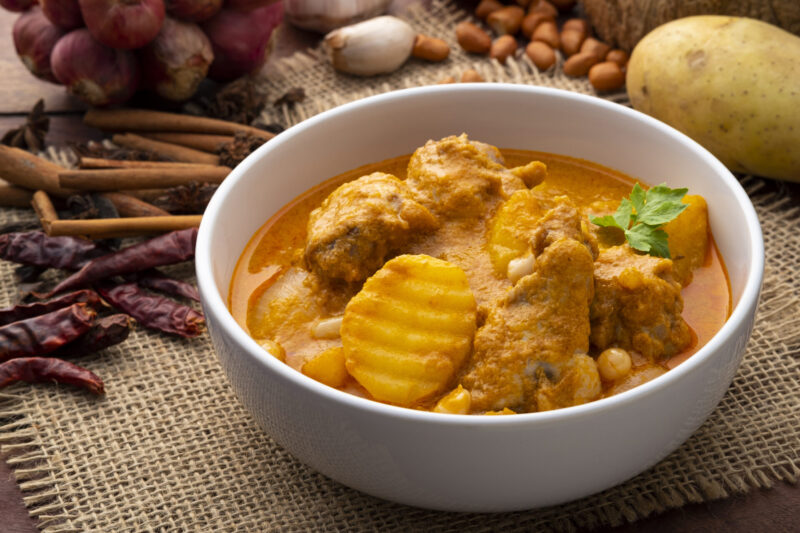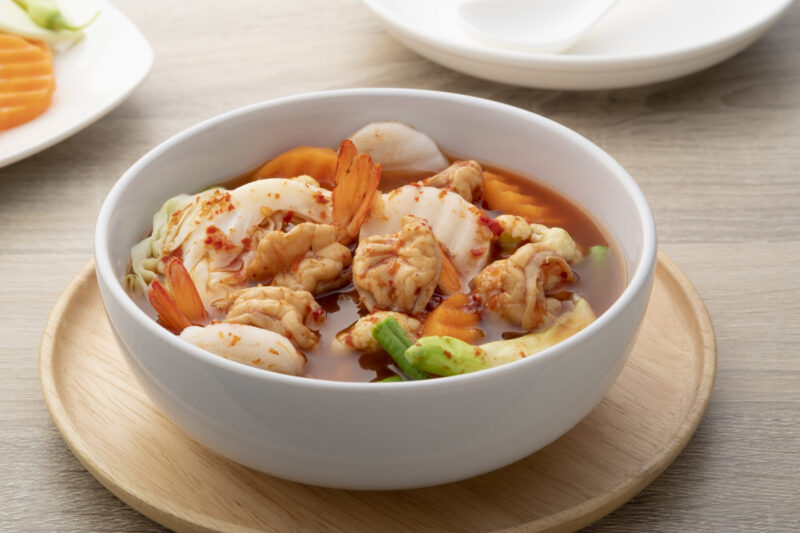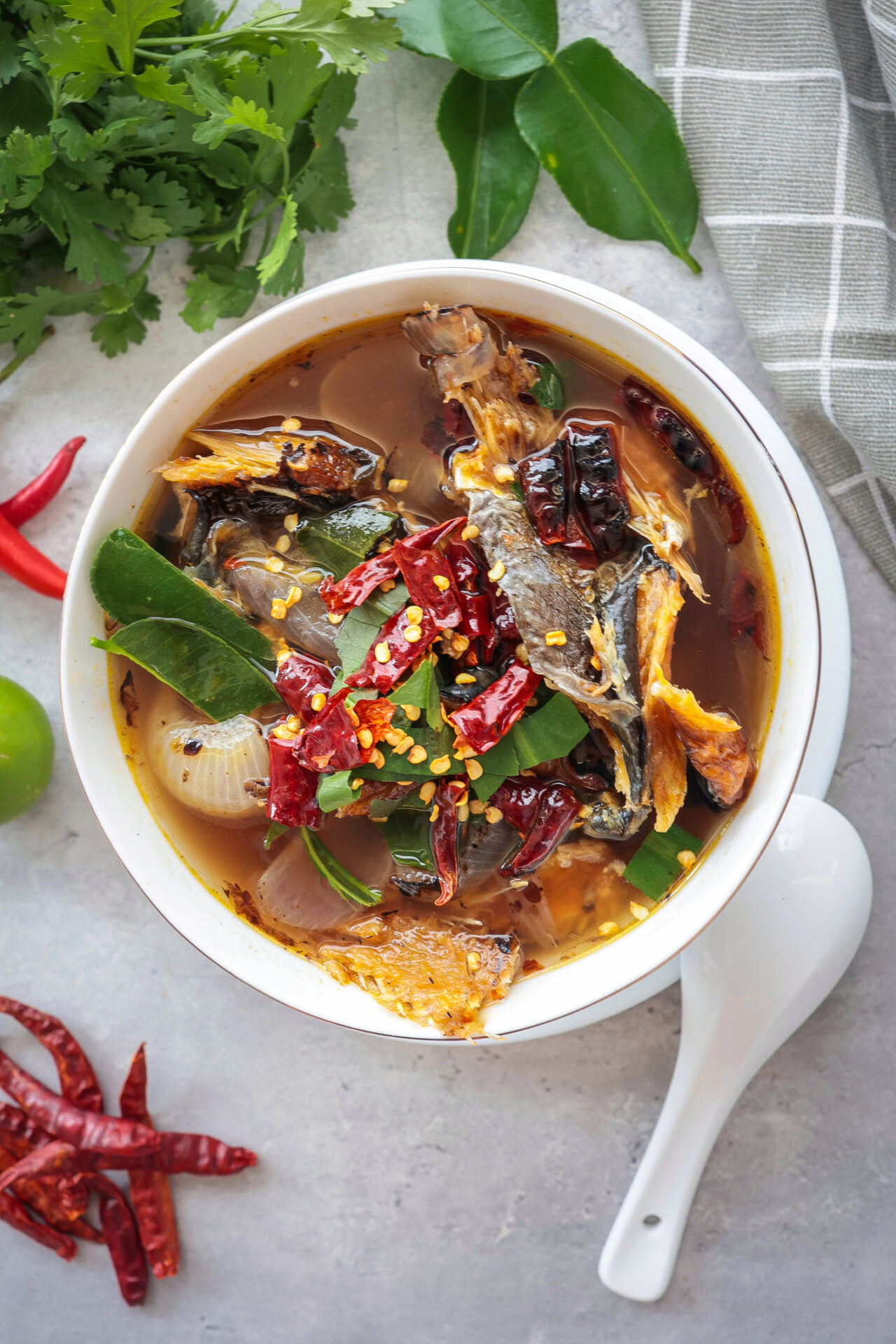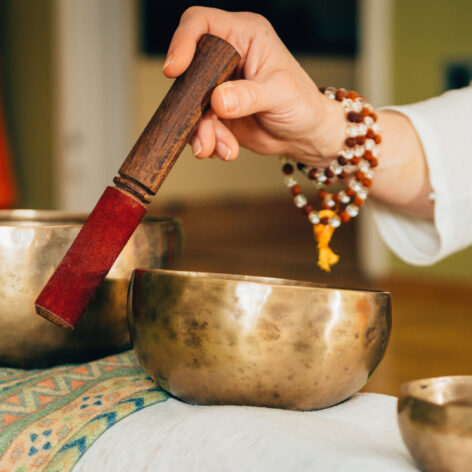For the uninitiated, the term “Kaeng” might evoke thoughts of a spicy, broth-like soup. While this interpretation holds some truth, “Kaeng” refers to a category of watery dishes, each defined by distinct cooking methods and flavor profiles*. Thai curries can range from those resembling traditional Indian curry to those with a more soup-like consistency, each offering a unique tasting experience.
At the heart of Thai curry is the revered “curry paste,” a harmonious blend of herbs and spices meticulously ground, pounded, or chopped. Ingredients such as shrimp paste, fresh and dried chilies, shallots, garlic, lemongrass, galangal, and coriander root meld together to create a robust foundation for these dishes. The preparation varies regionally, allowing each curry to showcase its own distinct personality.
Thai curries can be categorized into 4 main types:
1. Curry with paste and coconut milk: Notable examples include green curry and Massaman curry.
2. Curry with paste, no coconut milk: This category features Kaeng Pa and Kaeng Som.
3. Curry without paste but with coconut milk: Tom Kha and Tom Kati fall into this group.
4. Curry without paste and coconut milk: Dishes like Tom Yum and Tom Khem represent this style.
*Note: Definition based according to the Thai dictionary Royal Institute Edition 2011.


